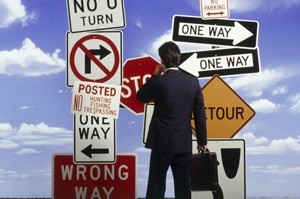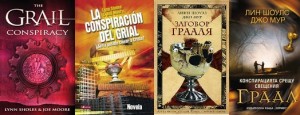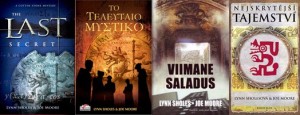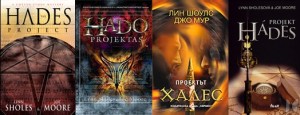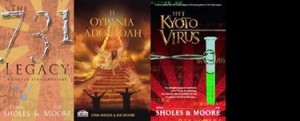Whenever I find myself growing grim about the mouth; whenever it is a damp, drizzly November in my soul; whenever I find myself involuntarily pausing before coffin warehouses, and bringing up the rear of every funeral I meet; and especially whenever my hypos get such an upper hand of me, that it requires a strong moral principle to prevent me from deliberately stepping into the street, and methodically knocking people’s hats off–then, I account it high time to get to sea as soon as I can. This is my substitute for pistol and ball. – Moby-Dick (Rockwell Kent, Illustrator)
Why does November feel like the month the Earth stood still? Or imploded? Or got hit by that tsunami in the movie 2012?
It seems like this month all the upheavals in the publishing industry started to coalesce into one big flaming mess on the order of the Hindenburg. At least, that’s how it sounded on various blogs and comment sections, where rhetoric sometimes reached conflagration levels.
All the anxiety over eBooks and eReaders, the move of some big publishers into the self-publishing market, the revelation of paltry incomes associated even with a New York Times bestselling book, and the apprehension of authors and agents over just how anybody is going make any kind of a buck as a novelist anymore – it all seemed to come to a head this month.
Why should this be so?
First, the very pace of change in our world is now such that major developments happen almost as fast as chair throwing incidents on Jerry Springer. And humans naturally feel anxious about change until we can catch up and figure out what’s going on. But we always seem to feel a few steps behind these days.
How fast are things moving? Already there’s talk that the Kindle is on the way out. Authors and publishers are even now embedding links to websites and YouTube for added content in digital novels, links which can be accessed on, say, an iPhone but not a Kindle. There’s even a name for such digi-novels: Vooks.
Which leads to the technological changes that seem poised to alter the paradigms we’ve lived with for centuries, such as books on paper being paid for by readers. No one knows what a paradigm shift feels like until they’ve actually been through it, and we haven’t been through it yet. We’re inside it.
So as all this is happening, hands are being wrung throughout cyberspace. The only thing we know for certain is nothing is certain, and the landscape we see today will be very different tomorrow.
I have but two predictions:
1. People are still going to want good stories to read.
2. They’re not going to pay as much money to get them.
As to #1, writers need to do what they’ve always done: write and write well. Over and over. That calls for commitment to the craft and resistance to the “easy way” of self-publishing.
Let’s be blunt. We all know the overwhelming majority of self-published books aren’t good enough to be published the traditional way. That doesn’t mean there aren’t exceptions. There are. But they are as rare as Susan Boyle.
Yes, I do believe authors will do more direct selling in the future. They will make their stuff available in digital form directly. But they still have to prove themselves to be good writers, or people won’t buy.
Which leads to #2. Consumers are being trained to pay $10 or less for books. This means hardcovers are probably a dinosaur. The mastodons are in the tar pits.
But there will still be a market for books, because of #1. You know what it feels like? The mass market paperback boom post-World War II. Low price point, ease of use. The eBook revolution may be recreating this type of market. (According to Kelly Gallagher, VP of Publishing Services at RR Bowker, eBook consumption favors fiction over nonfiction at a rate disproportionate to print).
The cream will rise to the top. Those novelists who can deliver, book after book, are going to gain a following and have the chance to make some coin.
EBooks still represent only a small portion of the book market, by the way. I mean, let’s not be hasty. The “early adopters” drove sales of eReaders over the last year. The curve is going to flatten in 2010 or 2011. It’s not going to be like the personal computer boom. We’re talking about a convenience rather than a necessity. (That may change somewhat as businesses find ways to use the ever improving devices. But will they become “little laptops”? I don’t think so because we already have something called . . . a laptop).
How far eReaders will eventually reach is still a tough call. I know there are purveyors of pervasiveness out there, but hold the iPhone. I’ve pointedly spoken to several twenty-something readers over the past few weeks, and was gobsmacked when none of them liked eReaders. They were paper people! Astonishing.
So whenever I get to feeling like old Ishmael, with a “damp, drizzly November of the soul,” and when I, too, want to go outside and knock some hats off, I remember that fiction writers will always be around. The world needs us.
Maybe now more than ever.







